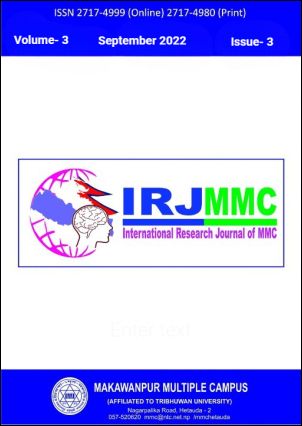The Impact of Monetary Policy on Economic Growth in Nepal: An Empirical Analysis
DOI:
https://doi.org/10.3126/irjmmc.v3i3.48635Keywords:
Co-integration, Exchange rate, GDP growth, Money supply, Unit rootAbstract
This research study investigates the impact of monetary policy on economic growth in Nepal. Data was taken from the sources of national account of World Bank from the year 1965 to 2020 for this purpose. Augmented Dickey- Fuller unit root test was performedto avoid spurious regression. Johansen co-integration test was applied after conforming all variables were integrated in order I (1) then Vector Error Correction model was used to find out the speed of adjustment towards long run equilibrium. The coefficient of VECM was negative and significant that shows long run relationship between monetary policy and GDP Growth. Granger Causality results show two-way causality between money supply andGDP Growth. The result supports the impact of monetary policy on economic growth of the country. It can reduce unemployment, promote investments and stabilize the economy so monetary authorities and policy makers should focus on healthy monetary policy for economic growth of the country.

